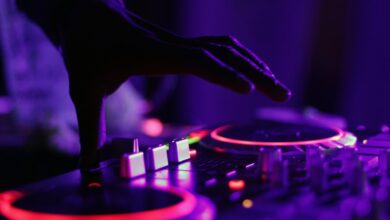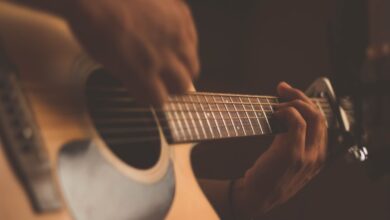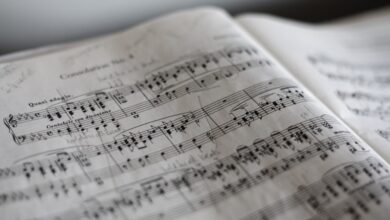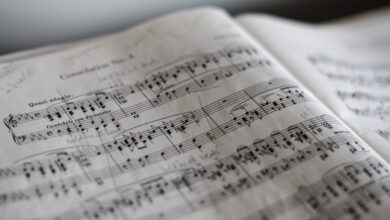The Therapeutic Power of Music: Healing through Instruments

Article:
Have you ever experienced the magical effect music can have on your mood? It’s like a soothing balm for the soul, capable of lifting our spirits and easing our troubles. But did you know that music goes beyond mere entertainment and holds incredible therapeutic power? In this article, we will explore how playing musical instruments can be a transformative healing experience.
When we immerse ourselves in music, whether as listeners or performers, something extraordinary happens within us. It’s as if the vibrations and melodies unlock a hidden doorway to our emotions, allowing us to express and process feelings that words alone cannot capture. Playing a musical instrument takes this experience to even greater heights.
Imagine holding a guitar in your hands or sitting behind a drum set, feeling the weight of the instrument and the anticipation of creating something beautiful. As you strum the strings or tap the drums, you enter a state of flow where time ceases to exist. Your mind becomes focused, and the worries of the day fade away. This meditative-like state allows you to release stress, anxiety, and emotional tension, offering a profound sense of relief and relaxation.
Moreover, engaging with musical instruments stimulates various areas of our brain, enhancing cognitive functions and promoting neuroplasticity. Learning to play an instrument involves concentration, memory, and coordination, which strengthen neural connections and improve overall brain health. This mental stimulation has been shown to have long-term benefits, such as delaying cognitive decline and reducing the risk of neurological disorders.
In addition to its cognitive effects, playing musical instruments can also be an outlet for emotional expression. When words fail to convey our innermost thoughts and feelings, music steps in as a universal language that speaks directly to our souls. Through the expressive power of instruments, we can channel our emotions, find solace in melodies, and create a personal narrative without uttering a single word.
Melodies of Healing: How Music Instruments are Transforming Therapy
Have you ever experienced the power of music? The way it can transport you to another world, evoke emotions, and bring solace during difficult times? Well, prepare to be amazed as we delve into the realm of music therapy and how musical instruments are playing a transformative role in healing.
Music has been an integral part of human culture for centuries, but its therapeutic benefits have only recently gained recognition. In today’s fast-paced and stressful world, people are seeking alternative methods to enhance their well-being, and music therapy is emerging as a captivating option. By incorporating various musical instruments into therapeutic practices, individuals can experience profound emotional and physical healing.
One instrument that stands out in the therapeutic landscape is the piano. Its versatile nature allows therapists to create a wide range of melodies and harmonies, tailored to individual needs. The soothing sounds produced by the piano have a calming effect on the mind and body, helping to reduce anxiety and stress. Moreover, playing the piano engages both hemispheres of the brain, stimulating cognitive abilities and promoting mental acuity.
Another instrument that holds immense therapeutic potential is the guitar. With its ability to strum gentle chords or unleash powerful riffs, the guitar can channel emotions and provide an outlet for self-expression. Playing the guitar facilitates motor skill development and coordination, making it an effective tool in physical rehabilitation. Additionally, the rhythmic patterns produced by this instrument can synchronize with the heartbeat, inducing a sense of relaxation and promoting overall well-being.
Let’s not forget the enchanting sound of the flute. Its serene tones have long been associated with tranquility and inner peace. When used in therapy, the flute’s melodic notes can alleviate depression, instill a sense of hope, and facilitate emotional release. Its simplicity allows individuals to connect with their emotions on a deep level, creating a safe space for healing and self-discovery.
Unlocking the Harmony Within: Exploring the Therapeutic Potential of Musical Instruments

Have you ever been deeply moved by a piece of music? Perhaps it stirred up emotions within you or transported you to another world. Music has an incredible power that goes beyond mere entertainment. In fact, it has been recognized for its therapeutic potential, particularly when it comes to playing musical instruments. Let’s delve into the fascinating realm of music therapy and discover how unlocking the harmony within can have profound effects on our well-being.
Playing a musical instrument is not just a hobby; it can be a transformative experience. When we engage with an instrument, whether it’s strumming a guitar, pressing keys on a piano, or blowing into a flute, we tap into a unique form of expression. This creative outlet allows us to channel our emotions and connect with ourselves at a deeper level. It’s like a language that transcends words, enabling us to communicate our innermost thoughts and feelings.
But what makes playing a musical instrument therapeutic? One key factor is the release of endorphins. When we play, our brain releases these feel-good chemicals that promote relaxation, reduce stress, and boost our mood. The act of creating music also stimulates various regions of the brain, sharpening our cognitive abilities and enhancing memory and concentration.

Moreover, playing a musical instrument can serve as a powerful stress reliever. Just imagine the soothing sound of a violin or the rhythmic beat of drums filling the air. As we immerse ourselves in the music, our worries and anxieties melt away. It’s as if the instrument becomes an extension of ourselves, allowing us to find solace in the melodies we create.
Music therapy has shown promising results in various clinical settings. For individuals struggling with mental health issues such as depression or anxiety, engaging with musical instruments can provide a form of catharsis. It offers a safe space to express complex emotions that may be difficult to put into words. Additionally, music therapy has been found beneficial for individuals with cognitive impairments or chronic pain, providing relief and improving overall well-being.
Striking the Right Chord: How Instruments Help in the Journey of Emotional Recovery

Introduction:
Have you ever noticed the profound effect that music can have on your emotions? From uplifting melodies that make us smile to melancholic tunes that bring tears to our eyes, music has a unique way of touching our souls. In the realm of emotional recovery, instruments play a remarkable role in helping individuals navigate their journey towards healing and inner peace. This article explores how the power of instruments can profoundly impact emotional well-being.
The Healing Power of Music:
Music has been used for centuries as a therapeutic tool, transcending cultural boundaries and language barriers. It speaks to us on a primal level, evoking emotions that words struggle to express. When it comes to emotional recovery, instruments serve as conduits for these emotions, enabling individuals to channel their feelings in a constructive and healing manner.

Expressing Emotions:
Instruments provide an outlet for self-expression, allowing individuals to convey their deepest emotions without the need for words. Whether it’s the gentle strumming of a guitar or the soulful notes of a piano, each instrument offers a unique voice for emotional release. Playing an instrument becomes a form of catharsis, enabling individuals to explore and process their feelings in a safe and creative way.
Creating Emotional Resonance:
Just as a skilled painter uses colors to create mood and depth in a painting, musicians use instruments to evoke specific emotions. Each instrument carries its own timbre, tone, and range, capable of producing a diverse array of sounds that resonate with our innermost being. Through skillful playing and composition, musicians can tap into the emotional landscape of their listeners, providing solace, inspiration, and a sense of connection.
Building Resilience:
Learning to play an instrument requires discipline, patience, and perseverance. The process of mastering an instrument parallels the journey of emotional recovery, where setbacks and challenges are encountered along the way. By immersing themselves in the practice and refinement of their musical abilities, individuals develop resilience and inner strength, translating into a greater capacity to overcome emotional hurdles.
Conclusion:
Symphony of Well-being: The Surprising Benefits of Playing Musical Instruments
Music has an incredible power to move us, captivate our souls, and touch the deepest parts of our being. It’s no wonder that playing musical instruments can create a symphony of well-being in our lives. Beyond the sheer joy of creating beautiful melodies, there are surprising benefits that come with embracing the world of music.

For starters, playing a musical instrument is like giving your brain a full workout. It engages multiple areas of the brain simultaneously, stimulating cognitive function and enhancing memory. Studies have shown that musicians tend to have better problem-solving skills and higher IQ levels. So, if you’re looking to boost your brainpower, picking up an instrument might be just the ticket.
But the benefits don’t stop at the brain. Playing an instrument can also have a positive impact on our emotional well-being. Music has the remarkable ability to evoke strong emotions and serve as an outlet for self-expression. When we play an instrument, we pour our emotions into every note, releasing stress and finding solace. It’s like painting with sound, where each melody becomes a brushstroke on the canvas of our emotions.
Moreover, playing a musical instrument can be a social experience that fosters connection and community. Whether it’s joining a band, participating in jam sessions, or simply performing for friends and family, music brings people together. It transcends language barriers and cultural differences, creating a universal language that unites us all. So, by playing an instrument, you not only nurture your own well-being but also forge meaningful connections with others.
In addition to the mental and emotional benefits, playing a musical instrument can have surprising physical advantages as well. It requires coordination, dexterity, and fine motor skills, which can improve hand-eye coordination and finger strength. As you practice and refine your technique, you’ll notice an increase in your motor skills and overall physical agility.




